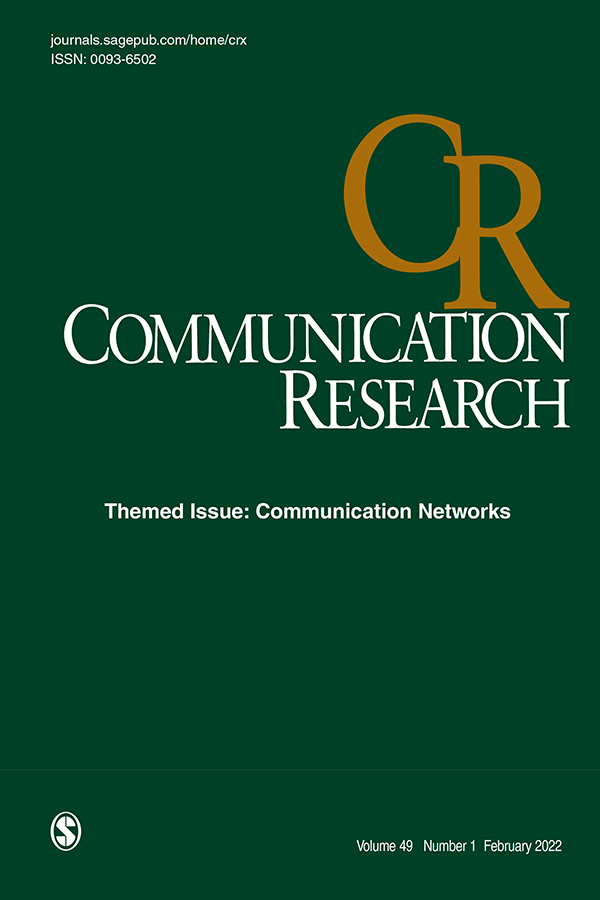Testing the Predictive Power of a Cognitive-Structural Approach to Message Design: Persuasive Effects Among Republicans and Democrats
IF 3.2
1区 文学
Q1 COMMUNICATION
引用次数: 0
Abstract
Several theoretical approaches suggest that a promising approach to designing effective, tailored persuasive messages may be to draw on insights from an audience’s shared cognitive structure. Specifically, a cognitive-structural approach to message design would suggest that messages targeting central concepts in an audience’s shared cognitive structure will have stronger persuasive effects than messages targeting more peripheral concepts. The present investigation, however, failed to provide support for this approach. The results of four studies revealed that attitude and semantic networks each provided a different estimate of cognitive structure and made competing claims about whether this structure differs for Republicans and Democrats. However, neither structure successfully predicted which messages would be most effective. Instead, both Democrats and Republicans were persuaded by a wide range of arguments targeting both central and peripheral concepts. The results have implications for future work on the role of cognitive structures in persuasion and theory-driven message development.测试信息设计的认知结构方法的预测能力:共和党人和民主党人的说服效果
一些理论方法表明,设计有效的、量身定制的有说服力的信息的一种有希望的方法可能是利用听众共同认知结构的见解。具体来说,信息设计的认知结构方法表明,针对受众共同认知结构中的中心概念的信息比针对更多外围概念的信息具有更强的说服力。然而,目前的调查未能为这种方法提供支持。四项研究的结果显示,态度网络和语义网络各自提供了对认知结构的不同估计,并就共和党人和民主党人的认知结构是否不同提出了相互竞争的主张。然而,这两种结构都无法成功预测哪些消息是最有效的。相反,民主党人和共和党人都被针对核心和边缘概念的广泛争论所说服。这些结果对未来关于认知结构在说服和理论驱动信息发展中的作用的研究具有启示意义。
本文章由计算机程序翻译,如有差异,请以英文原文为准。
求助全文
约1分钟内获得全文
求助全文
来源期刊

Communication Research
COMMUNICATION-
CiteScore
17.10
自引率
0.00%
发文量
20
期刊介绍:
Empirical research in communication began in the 20th century, and there are more researchers pursuing answers to communication questions today than at any other time. The editorial goal of Communication Research is to offer a special opportunity for reflection and change in the new millennium. To qualify for publication, research should, first, be explicitly tied to some form of communication; second, be theoretically driven with results that inform theory; third, use the most rigorous empirical methods; and fourth, be directly linked to the most important problems and issues facing humankind. Critieria do not privilege any particular context; indeed, we believe that the key problems facing humankind occur in close relationships, groups, organiations, and cultures.
 求助内容:
求助内容: 应助结果提醒方式:
应助结果提醒方式:


